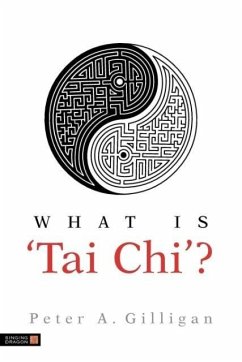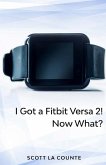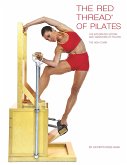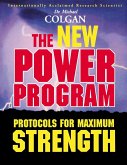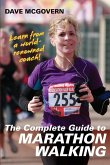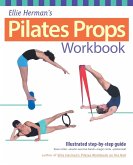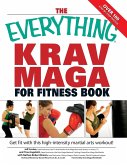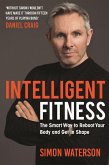Peter A. Gilligan
What Is 'Tai Chi'?
18,99 €
inkl. MwSt.
Versandfertig in 1-2 Wochen

9 °P sammeln
Peter A. Gilligan
What Is 'Tai Chi'?
- Broschiertes Buch
- Merkliste
- Auf die Merkliste
- Bewerten Bewerten
- Teilen
- Produkt teilen
- Produkterinnerung
- Produkterinnerung
This insightful book covers all aspects of 'Tai Chi', answering questions that are beyond the scope of many classes. A wide range of material is covered, including fundamental points about the mechanics of movement and the 'energetic' aspects of practice, as well as the relationship between body, mind and spirit that emerges.
Andere Kunden interessierten sich auch für
![Yout Got a Fitbit Versa 2! Now What? Yout Got a Fitbit Versa 2! Now What?]() Scott La CounteYout Got a Fitbit Versa 2! Now What?15,99 €
Scott La CounteYout Got a Fitbit Versa 2! Now What?15,99 €![The Red Thread of Pilates The Integrated System and Variations of Pilates - The High Chair The Red Thread of Pilates The Integrated System and Variations of Pilates - The High Chair]() Kathryn Ross-NashThe Red Thread of Pilates The Integrated System and Variations of Pilates - The High Chair466,99 €
Kathryn Ross-NashThe Red Thread of Pilates The Integrated System and Variations of Pilates - The High Chair466,99 €![New Power Program New Power Program]() Michael ColganNew Power Program33,99 €
Michael ColganNew Power Program33,99 €![The Complete Guide to Marathon Walking The Complete Guide to Marathon Walking]() Dave McGovernThe Complete Guide to Marathon Walking26,99 €
Dave McGovernThe Complete Guide to Marathon Walking26,99 €![Ellie Herman's Pilates Props Workbook Ellie Herman's Pilates Props Workbook]() Ellie HermanEllie Herman's Pilates Props Workbook15,99 €
Ellie HermanEllie Herman's Pilates Props Workbook15,99 €![The Everything Krav Maga for Fitness Book The Everything Krav Maga for Fitness Book]() Jeff LevineThe Everything Krav Maga for Fitness Book18,99 €
Jeff LevineThe Everything Krav Maga for Fitness Book18,99 €![Intelligent Fitness Intelligent Fitness]() Simon WatersonIntelligent Fitness26,99 €
Simon WatersonIntelligent Fitness26,99 €-
-
-
This insightful book covers all aspects of 'Tai Chi', answering questions that are beyond the scope of many classes. A wide range of material is covered, including fundamental points about the mechanics of movement and the 'energetic' aspects of practice, as well as the relationship between body, mind and spirit that emerges.
Hinweis: Dieser Artikel kann nur an eine deutsche Lieferadresse ausgeliefert werden.
Hinweis: Dieser Artikel kann nur an eine deutsche Lieferadresse ausgeliefert werden.
Produktdetails
- Produktdetails
- Verlag: Singing Dragon
- Seitenzahl: 220
- Erscheinungstermin: 1. Januar 2010
- Englisch
- Abmessung: 229mm x 152mm x 12mm
- Gewicht: 326g
- ISBN-13: 9781848190245
- ISBN-10: 1848190247
- Artikelnr.: 26764349
- Herstellerkennzeichnung
- Libri GmbH
- Europaallee 1
- 36244 Bad Hersfeld
- gpsr@libri.de
- Verlag: Singing Dragon
- Seitenzahl: 220
- Erscheinungstermin: 1. Januar 2010
- Englisch
- Abmessung: 229mm x 152mm x 12mm
- Gewicht: 326g
- ISBN-13: 9781848190245
- ISBN-10: 1848190247
- Artikelnr.: 26764349
- Herstellerkennzeichnung
- Libri GmbH
- Europaallee 1
- 36244 Bad Hersfeld
- gpsr@libri.de
Peter A. Gilligan
Acknowledgements. A Note on Romanisation. Section 1. Preliminaries and
Preconceptions. 1. A Punet of Problems. Introduction. The Problems of
Gradings. The Problem of Cultural Communication. The Problem of Language.
The Need for Contextual Study. The Systems Approach. The Basic Chinese
World View. Conclusion. 2. What's in a Word? Preliminaries: Background,
Chinese Terms, What is Taijiquan? Taijiquan as Self Cultivation.
Cultivation. Qi. Yin-Yang. Qi Gong. Schools of Qi Gong: Internal and
External. The Use of Sensitivity. The Use of Intention (Will/Imagination).
The Three Systems of Qi Gong. Types of Qigong. Jing Gong. Jing - Dong Gong.
Dong Gong. Use of Xin (Sensitivity) and Yi (Will) in Qi Gong. Summary. 3.
Laying the Martial Ghost. Taijiquan as Self Defense. Self Defense and
Martial Art. Wu and Martial are not the Same. Martial Art and Wu Shu. Wu
Shu, Gong Fu and Self-Cultivation. Taijiquan as Wu Shu. Three Levels of
Testing in Taijiquan. The Role of 'Sparring' in Taijiquan. A Taijiquan
Approach to Wu Shu. A Personal Encounter. Conclusion. Section 2. Initial
Foundation. 4. Returning to Nature, Restoring Spring. The Meaning of
Natural in Taijiquan. The Rectification of the Body. The Need for a
Teacher. The Rectified Body. The Rectified Body: No Blocking or Wasting.
Natural Alignment. Structure and Posture. The Application of Yin-Yang to
the Body. Conclusion. 5. Learning How to Learn. Don't Try Too Hard. Should
is a Condition - Not a Command. Wei Wu-Wei. Song. Song is the Expression of
Taiji in the Body. Testing. Methods of Testing. Testing Song. Making the
Most of Your Teacher. Summary. Basic Standing Posture. Three Circle Theory.
6. Methods and Techniques. Taiji and Taijiquan are not the Same. Daoyin.
What are Methods and Techniques. People are Individuals, Unique and
Different. Daoyin is Qi Gong. Daoyin and Gong Fu; Internal and External.
Daoyin in Taijiquan. An Exercise to Learn Daoyin. The Three Systems of
Daoyin Qi Gong. Conclusion. Section 3. The Art of Taijiquan. 7. The Six
Secrets. The Six Secrets. Nei Gong. The Six Secrets as Nei Gong. Discussion
of the Six Secrets. Three-Circle Theory. Yin Yang Theory. Taijiquan Forms
are Movements. Benefits of Yin-Yang Form Study. Stages of Yin Yang Study.
Spiral, or Qi, Form. Problems in Spiral Form Study. Centre-Turn Form.
Spiral in the Leg. Yin-Yang Head and Hands. Conclusion. 8. Practice to
Perfection. The Syllabus of Taijiquan. The Taijiquan Teacher's Job.
Practicing Taijiquan. Syllabus, Technique and Method. Internal Breathing;
Nei Gong. Nei Gong Daoyin Exercise. Testing and Warnings. Traditional Nei
Gong. Conclusion. Appendix. Taijiquan: Forms, Techniques and Practices.
Supplementary Forms and Practices. Pushing Hands. Two Person Taijiquan.
Weapons Forms. References. Bibliography.
Preconceptions. 1. A Punet of Problems. Introduction. The Problems of
Gradings. The Problem of Cultural Communication. The Problem of Language.
The Need for Contextual Study. The Systems Approach. The Basic Chinese
World View. Conclusion. 2. What's in a Word? Preliminaries: Background,
Chinese Terms, What is Taijiquan? Taijiquan as Self Cultivation.
Cultivation. Qi. Yin-Yang. Qi Gong. Schools of Qi Gong: Internal and
External. The Use of Sensitivity. The Use of Intention (Will/Imagination).
The Three Systems of Qi Gong. Types of Qigong. Jing Gong. Jing - Dong Gong.
Dong Gong. Use of Xin (Sensitivity) and Yi (Will) in Qi Gong. Summary. 3.
Laying the Martial Ghost. Taijiquan as Self Defense. Self Defense and
Martial Art. Wu and Martial are not the Same. Martial Art and Wu Shu. Wu
Shu, Gong Fu and Self-Cultivation. Taijiquan as Wu Shu. Three Levels of
Testing in Taijiquan. The Role of 'Sparring' in Taijiquan. A Taijiquan
Approach to Wu Shu. A Personal Encounter. Conclusion. Section 2. Initial
Foundation. 4. Returning to Nature, Restoring Spring. The Meaning of
Natural in Taijiquan. The Rectification of the Body. The Need for a
Teacher. The Rectified Body. The Rectified Body: No Blocking or Wasting.
Natural Alignment. Structure and Posture. The Application of Yin-Yang to
the Body. Conclusion. 5. Learning How to Learn. Don't Try Too Hard. Should
is a Condition - Not a Command. Wei Wu-Wei. Song. Song is the Expression of
Taiji in the Body. Testing. Methods of Testing. Testing Song. Making the
Most of Your Teacher. Summary. Basic Standing Posture. Three Circle Theory.
6. Methods and Techniques. Taiji and Taijiquan are not the Same. Daoyin.
What are Methods and Techniques. People are Individuals, Unique and
Different. Daoyin is Qi Gong. Daoyin and Gong Fu; Internal and External.
Daoyin in Taijiquan. An Exercise to Learn Daoyin. The Three Systems of
Daoyin Qi Gong. Conclusion. Section 3. The Art of Taijiquan. 7. The Six
Secrets. The Six Secrets. Nei Gong. The Six Secrets as Nei Gong. Discussion
of the Six Secrets. Three-Circle Theory. Yin Yang Theory. Taijiquan Forms
are Movements. Benefits of Yin-Yang Form Study. Stages of Yin Yang Study.
Spiral, or Qi, Form. Problems in Spiral Form Study. Centre-Turn Form.
Spiral in the Leg. Yin-Yang Head and Hands. Conclusion. 8. Practice to
Perfection. The Syllabus of Taijiquan. The Taijiquan Teacher's Job.
Practicing Taijiquan. Syllabus, Technique and Method. Internal Breathing;
Nei Gong. Nei Gong Daoyin Exercise. Testing and Warnings. Traditional Nei
Gong. Conclusion. Appendix. Taijiquan: Forms, Techniques and Practices.
Supplementary Forms and Practices. Pushing Hands. Two Person Taijiquan.
Weapons Forms. References. Bibliography.
Acknowledgements. A Note on Romanisation. Section 1. Preliminaries and
Preconceptions. 1. A Punet of Problems. Introduction. The Problems of
Gradings. The Problem of Cultural Communication. The Problem of Language.
The Need for Contextual Study. The Systems Approach. The Basic Chinese
World View. Conclusion. 2. What's in a Word? Preliminaries: Background,
Chinese Terms, What is Taijiquan? Taijiquan as Self Cultivation.
Cultivation. Qi. Yin-Yang. Qi Gong. Schools of Qi Gong: Internal and
External. The Use of Sensitivity. The Use of Intention (Will/Imagination).
The Three Systems of Qi Gong. Types of Qigong. Jing Gong. Jing - Dong Gong.
Dong Gong. Use of Xin (Sensitivity) and Yi (Will) in Qi Gong. Summary. 3.
Laying the Martial Ghost. Taijiquan as Self Defense. Self Defense and
Martial Art. Wu and Martial are not the Same. Martial Art and Wu Shu. Wu
Shu, Gong Fu and Self-Cultivation. Taijiquan as Wu Shu. Three Levels of
Testing in Taijiquan. The Role of 'Sparring' in Taijiquan. A Taijiquan
Approach to Wu Shu. A Personal Encounter. Conclusion. Section 2. Initial
Foundation. 4. Returning to Nature, Restoring Spring. The Meaning of
Natural in Taijiquan. The Rectification of the Body. The Need for a
Teacher. The Rectified Body. The Rectified Body: No Blocking or Wasting.
Natural Alignment. Structure and Posture. The Application of Yin-Yang to
the Body. Conclusion. 5. Learning How to Learn. Don't Try Too Hard. Should
is a Condition - Not a Command. Wei Wu-Wei. Song. Song is the Expression of
Taiji in the Body. Testing. Methods of Testing. Testing Song. Making the
Most of Your Teacher. Summary. Basic Standing Posture. Three Circle Theory.
6. Methods and Techniques. Taiji and Taijiquan are not the Same. Daoyin.
What are Methods and Techniques. People are Individuals, Unique and
Different. Daoyin is Qi Gong. Daoyin and Gong Fu; Internal and External.
Daoyin in Taijiquan. An Exercise to Learn Daoyin. The Three Systems of
Daoyin Qi Gong. Conclusion. Section 3. The Art of Taijiquan. 7. The Six
Secrets. The Six Secrets. Nei Gong. The Six Secrets as Nei Gong. Discussion
of the Six Secrets. Three-Circle Theory. Yin Yang Theory. Taijiquan Forms
are Movements. Benefits of Yin-Yang Form Study. Stages of Yin Yang Study.
Spiral, or Qi, Form. Problems in Spiral Form Study. Centre-Turn Form.
Spiral in the Leg. Yin-Yang Head and Hands. Conclusion. 8. Practice to
Perfection. The Syllabus of Taijiquan. The Taijiquan Teacher's Job.
Practicing Taijiquan. Syllabus, Technique and Method. Internal Breathing;
Nei Gong. Nei Gong Daoyin Exercise. Testing and Warnings. Traditional Nei
Gong. Conclusion. Appendix. Taijiquan: Forms, Techniques and Practices.
Supplementary Forms and Practices. Pushing Hands. Two Person Taijiquan.
Weapons Forms. References. Bibliography.
Preconceptions. 1. A Punet of Problems. Introduction. The Problems of
Gradings. The Problem of Cultural Communication. The Problem of Language.
The Need for Contextual Study. The Systems Approach. The Basic Chinese
World View. Conclusion. 2. What's in a Word? Preliminaries: Background,
Chinese Terms, What is Taijiquan? Taijiquan as Self Cultivation.
Cultivation. Qi. Yin-Yang. Qi Gong. Schools of Qi Gong: Internal and
External. The Use of Sensitivity. The Use of Intention (Will/Imagination).
The Three Systems of Qi Gong. Types of Qigong. Jing Gong. Jing - Dong Gong.
Dong Gong. Use of Xin (Sensitivity) and Yi (Will) in Qi Gong. Summary. 3.
Laying the Martial Ghost. Taijiquan as Self Defense. Self Defense and
Martial Art. Wu and Martial are not the Same. Martial Art and Wu Shu. Wu
Shu, Gong Fu and Self-Cultivation. Taijiquan as Wu Shu. Three Levels of
Testing in Taijiquan. The Role of 'Sparring' in Taijiquan. A Taijiquan
Approach to Wu Shu. A Personal Encounter. Conclusion. Section 2. Initial
Foundation. 4. Returning to Nature, Restoring Spring. The Meaning of
Natural in Taijiquan. The Rectification of the Body. The Need for a
Teacher. The Rectified Body. The Rectified Body: No Blocking or Wasting.
Natural Alignment. Structure and Posture. The Application of Yin-Yang to
the Body. Conclusion. 5. Learning How to Learn. Don't Try Too Hard. Should
is a Condition - Not a Command. Wei Wu-Wei. Song. Song is the Expression of
Taiji in the Body. Testing. Methods of Testing. Testing Song. Making the
Most of Your Teacher. Summary. Basic Standing Posture. Three Circle Theory.
6. Methods and Techniques. Taiji and Taijiquan are not the Same. Daoyin.
What are Methods and Techniques. People are Individuals, Unique and
Different. Daoyin is Qi Gong. Daoyin and Gong Fu; Internal and External.
Daoyin in Taijiquan. An Exercise to Learn Daoyin. The Three Systems of
Daoyin Qi Gong. Conclusion. Section 3. The Art of Taijiquan. 7. The Six
Secrets. The Six Secrets. Nei Gong. The Six Secrets as Nei Gong. Discussion
of the Six Secrets. Three-Circle Theory. Yin Yang Theory. Taijiquan Forms
are Movements. Benefits of Yin-Yang Form Study. Stages of Yin Yang Study.
Spiral, or Qi, Form. Problems in Spiral Form Study. Centre-Turn Form.
Spiral in the Leg. Yin-Yang Head and Hands. Conclusion. 8. Practice to
Perfection. The Syllabus of Taijiquan. The Taijiquan Teacher's Job.
Practicing Taijiquan. Syllabus, Technique and Method. Internal Breathing;
Nei Gong. Nei Gong Daoyin Exercise. Testing and Warnings. Traditional Nei
Gong. Conclusion. Appendix. Taijiquan: Forms, Techniques and Practices.
Supplementary Forms and Practices. Pushing Hands. Two Person Taijiquan.
Weapons Forms. References. Bibliography.
